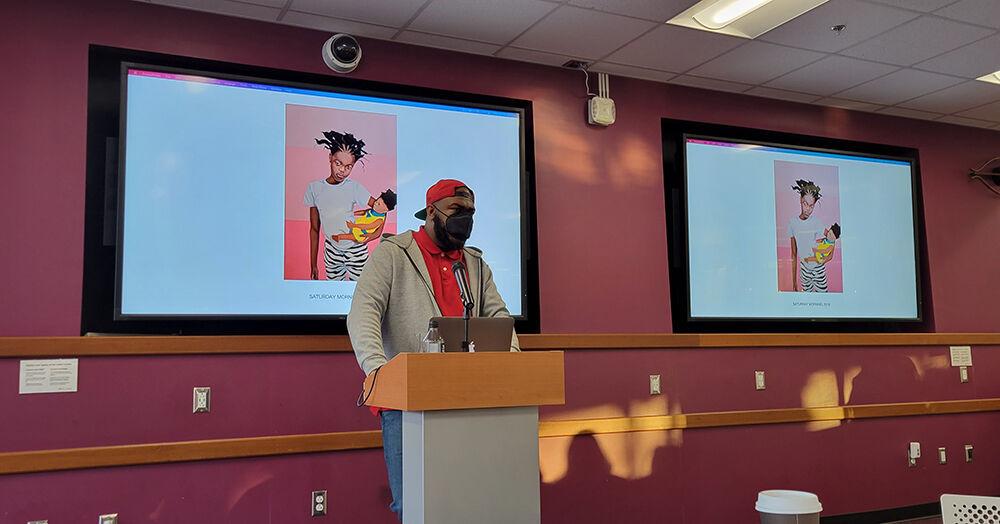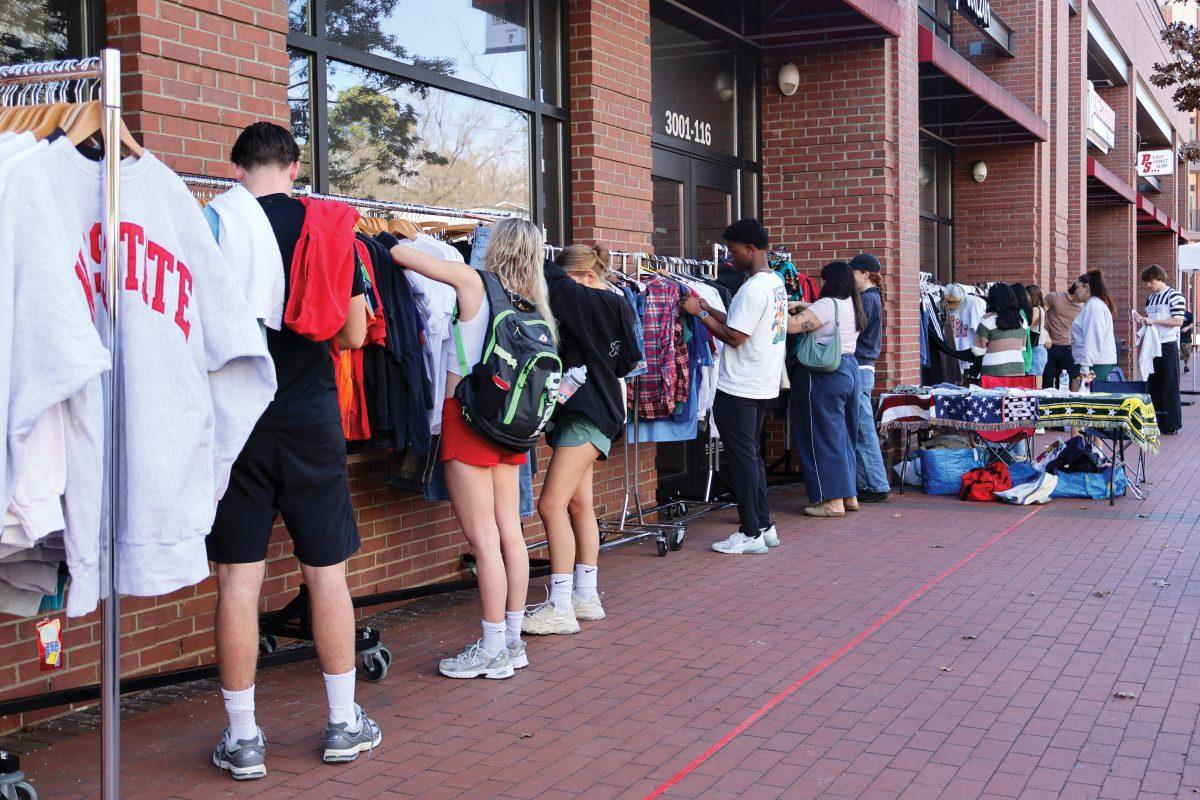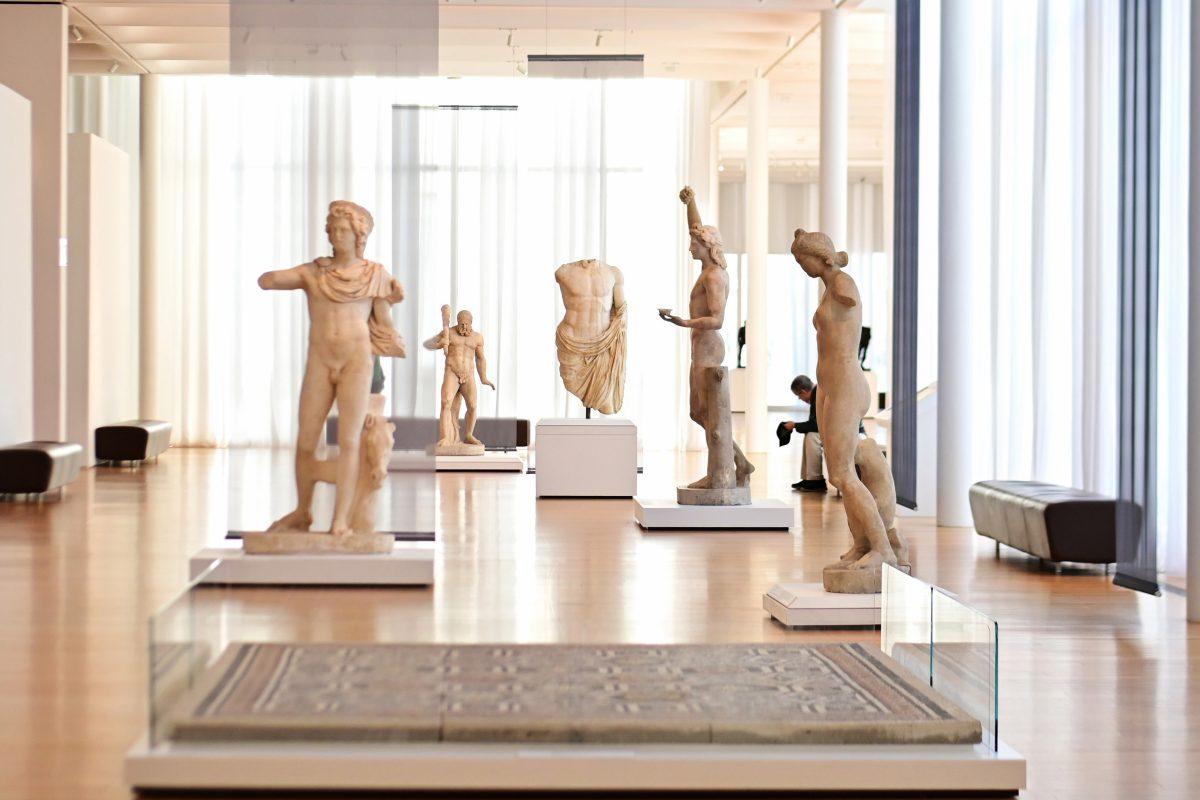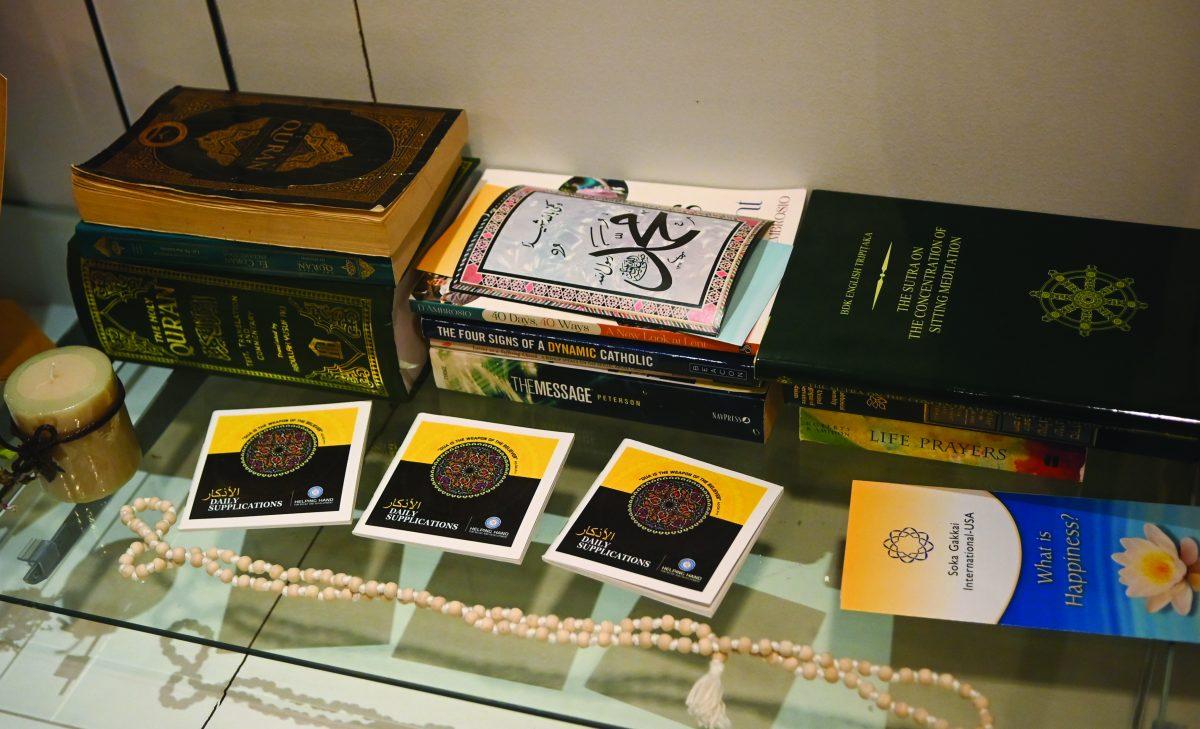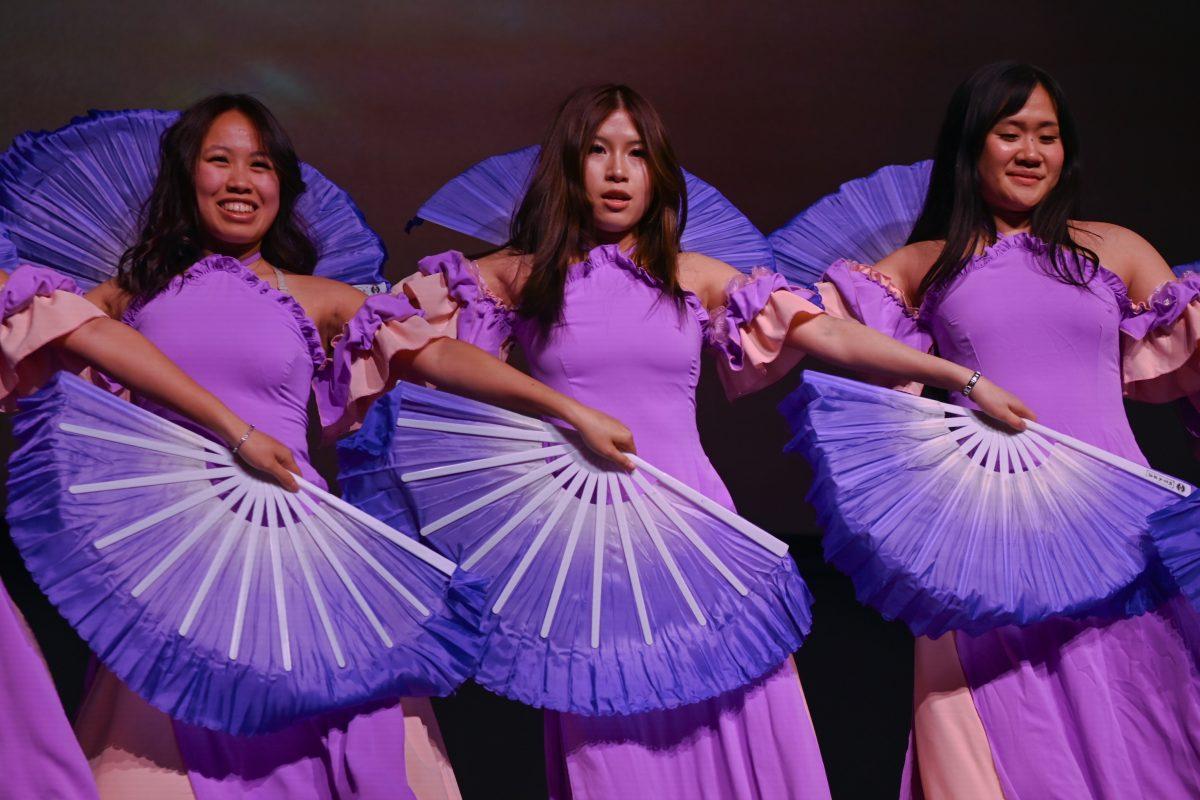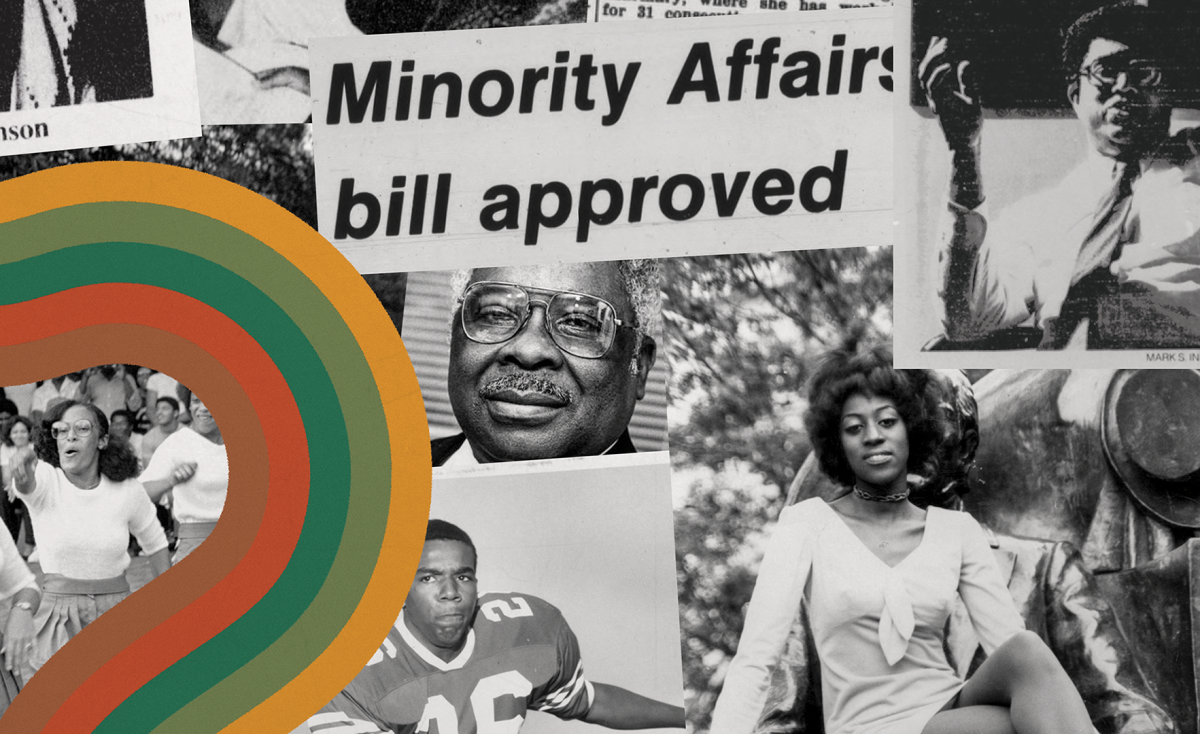On a Wednesday evening in January, Sabrina Hurtado pulled extra tables through the glass doors of D.H. Hill’s packed Fishbowl Forum to accommodate an overwhelming turnout to local artist Clarence Heyward’s talk, the third event in Heyward’s weeklong residency at NC State.
Students from all disciplines, along with several faculty and staff members, squeezed in eagerly to hear about Heyward’s journey to becoming a career artist.
Heyward, a painter and collage artist, regularly explores concepts of social identity in his work, specifically in regards to being Black in America. Hurtado, a third-year studying visual arts and arts entrepreneurship, planned the entire residency and said Heyward was a natural choice for the role.
“When we talk about people’s experiences with racial backgrounds, sexual orientation, ethnicity, religions, etc., they enrich our knowledge of other people, the world and how you look at things exponentially,” Hurtado said. “Since in the art world and in media we mostly see white artists in the spotlight, I really wanted to give students an example of ‘Hey, this is a BIPOC artist that deserves a lot of attention and has experiences and points of view that you might not have heard of before.’”
After only a few years of seriously pursuing art as a career, Heyward’s paintings and collages have already earned notable success and recognition both in the Triangle area and nationally. A selection of his work is currently on exhibit at the Contemporary Art Museum of Raleigh.
Though Heyward was interested in art from the time he was young — attending a specialized art high school and later majoring in arts education — he strayed from art after graduating from college. He spent over a decade as a truck driver before deciding, with the help of his wife, that it was time to return to art.
“I was questioning my impact on the world and how I will be remembered,” Heyward said. “I asked was i’m making the best of the times ahead, and the answer was pretty much no. I wasn’t making the impact I wanted. I didn’t feel like I was making the best of my time.”
Heyward said while the transition was hard at times, he now feels fulfilled in a way that he didn’t before.
“I’m telling stories about like the Black experience in America,” Heyward said. “Hopefully, people can relate to that. I’m letting some people in on things that they may not be aware of or they may not necessarily see. I’m leaving a legacy for my family and my children. I’m happy doing what I do now.”
One of Hurtado’s primary goals for the residency was to host events that were accessible and appealing to all students, no matter their interests or disciplines.
“It’s very much a cultural thing that the arts are exclusive,” Hurtado said. “A lot of people say ‘No, I’m not an artist’ or ‘I’m not good at it. I’m not creative enough.’ I wanted to make it look like ‘Hey, we’re just like you, and you don’t have to be an artist to make art.’ There isn’t this exclusive title.”
Especially at a STEM-oriented school like NC State, there tends to be stark boundaries between disciplines that can limit the kinds of interactions people have. Hurtado sought through the residency to soften these boundaries, planning events that would allow students to relate to Heyward as a person rather than revere him as an artist.
To that end, Hurtado was intentional about holding only one direct art-making event and focusing other events around learning about Heyward’s life and practices more generally. In addition to the collage-making session, they had an entrepreneurship Q&A where Heyward answered questions about what went into making a living as an artist, a podcast recording session with the African American Cultural Center where Heyward considered hidden racism in society and an artist talk, where he discussed his non-linear path to realizing his passion.
To close out the week, Heyward painted a mural of a black fist with an American flag at the Free Expression Tunnel, which remained there through the close of Black History Month.


